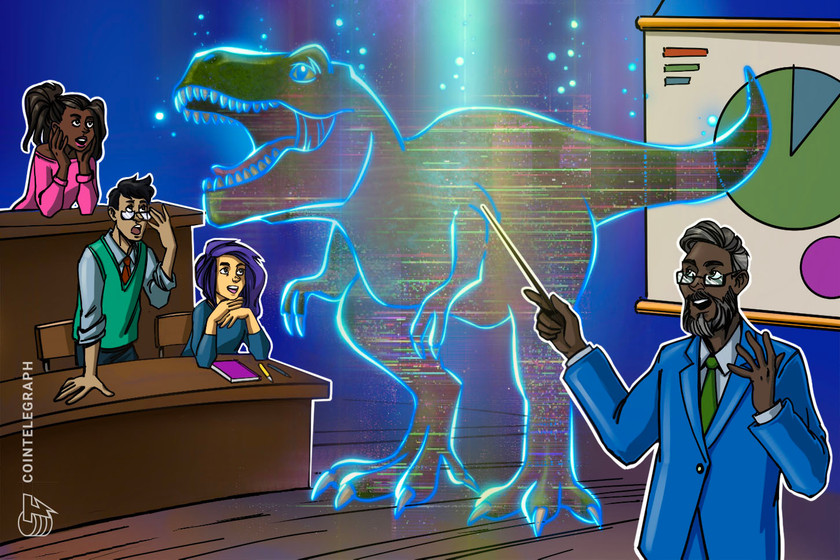
The metaverse can present a new era for education, enabling decentralized classrooms and immersive learning.
Disadvantages of metaverse learning environments
While learning how the metaverse can help students and teachers showcases the benefits of metaverse education over traditional schooling, the virtual world has its downsides to consider.
While virtual reality classrooms sound fantastic on paper, there are some downsides as well. For instance, children with disabilities such as hearing and vision problems would need special accommodations they might not be able to receive. If a hearing-impaired child from China wants to attend a metaverse class hosted by an American school, it’s unlikely that the American school would be willing or able to cater to the student.
In this case, catering to a child’s disabilities would fall upon the parents and not the school. This is an unfortunate circumstance, considering that most schools provide options for disabled children.
All of this goes to show that metaverse addiction is a real possibility for children and adults. If a student utilizes their virtual reality headset both for education and entertainment, they’ll be clocking dozens of hours a week in the digital world and might be neglecting their life in the real world. More time in a virtual world requires a balance with the real one — a balance that might not be easily achieved.
Finally, there’s the case of accessibility. For metaverse education to thrive and proliferate, it must become easier for families worldwide to acquire virtual reality headsets. Otherwise, such education will be limited to a select few and not to the majority.
Benefits of metaverse learning environments
Learning how to use virtual reality in schools presents various benefits over traditional models, allowing children to “visit” places from the past or conduct dangerous experiments in a safe, virtual environment.
While Roblox and similar titles present a current way to get virtual online learning experiences, these games lack what the metaverse can provide in a few key ways.
For one, metaverse environments aren’t bound to a graphical style. Roblox, Minecraft and Fortnite all have cartoonish visual aspects to them, which can distract from the learning and remind students that they’re playing one of their favorite games.
A metaverse environment, however, can be designed to look quite realistic. Depending on their metaverse of choice, educators will have the capabilities to design an environment that’s truly stunning and bound to captivate students old and young.
This isn’t to mention that metaverse environments can replicate real-life locations, bringing the immersion to a whole new level.
Aside from visual immersion, metaverse worlds can also offer more physical interaction. Virtual reality headsets and controllers are designed to feel natural and can replicate hands and fingers while the student is wearing the gear.
As a result, educators can design learning experiences that utilize the nuanced movement of hands, like teaching students how to write or showing them sign language. Once the children are out of the virtual world and back in the real world, they’ll have the muscle memory in place, and reliving their learned experiences won’t feel any different.
Metaverse learning environments can also promote safety in a way that real-world teaching simply cannot. In the metaverse, educators will have complete control over student interactions and can limit bullying or separate children for disciplinary purposes by simply changing some permissions in the virtual space. This way, children can focus on learning instead of worrying about bullies or other distractions.
Digital environments can also prevent devastating scenarios like school shootings, as children will be spread out in their homes rather than grouped in one area.
Teaching and learning in the metaverse
Teachers can build…
Read More: cointelegraph.com








 Bitcoin
Bitcoin  Ethereum
Ethereum  Tether
Tether  Solana
Solana  USDC
USDC  Lido Staked Ether
Lido Staked Ether  XRP
XRP  Toncoin
Toncoin  Dogecoin
Dogecoin  Cardano
Cardano  Avalanche
Avalanche  Shiba Inu
Shiba Inu  Wrapped Bitcoin
Wrapped Bitcoin  TRON
TRON  Polkadot
Polkadot  Chainlink
Chainlink  Bitcoin Cash
Bitcoin Cash  NEAR Protocol
NEAR Protocol  Polygon
Polygon  Litecoin
Litecoin  Uniswap
Uniswap  Internet Computer
Internet Computer  Fetch.ai
Fetch.ai  LEO Token
LEO Token  Dai
Dai  Pepe
Pepe  Ethereum Classic
Ethereum Classic  Render
Render  Hedera
Hedera  Wrapped eETH
Wrapped eETH  Aptos
Aptos  Immutable
Immutable  First Digital USD
First Digital USD  Cosmos Hub
Cosmos Hub  Cronos
Cronos  Filecoin
Filecoin  Renzo Restaked ETH
Renzo Restaked ETH  Mantle
Mantle  Arweave
Arweave  Stellar
Stellar  The Graph
The Graph  Stacks
Stacks  Optimism
Optimism  OKB
OKB  dogwifhat
dogwifhat  Arbitrum
Arbitrum  Bittensor
Bittensor  Maker
Maker